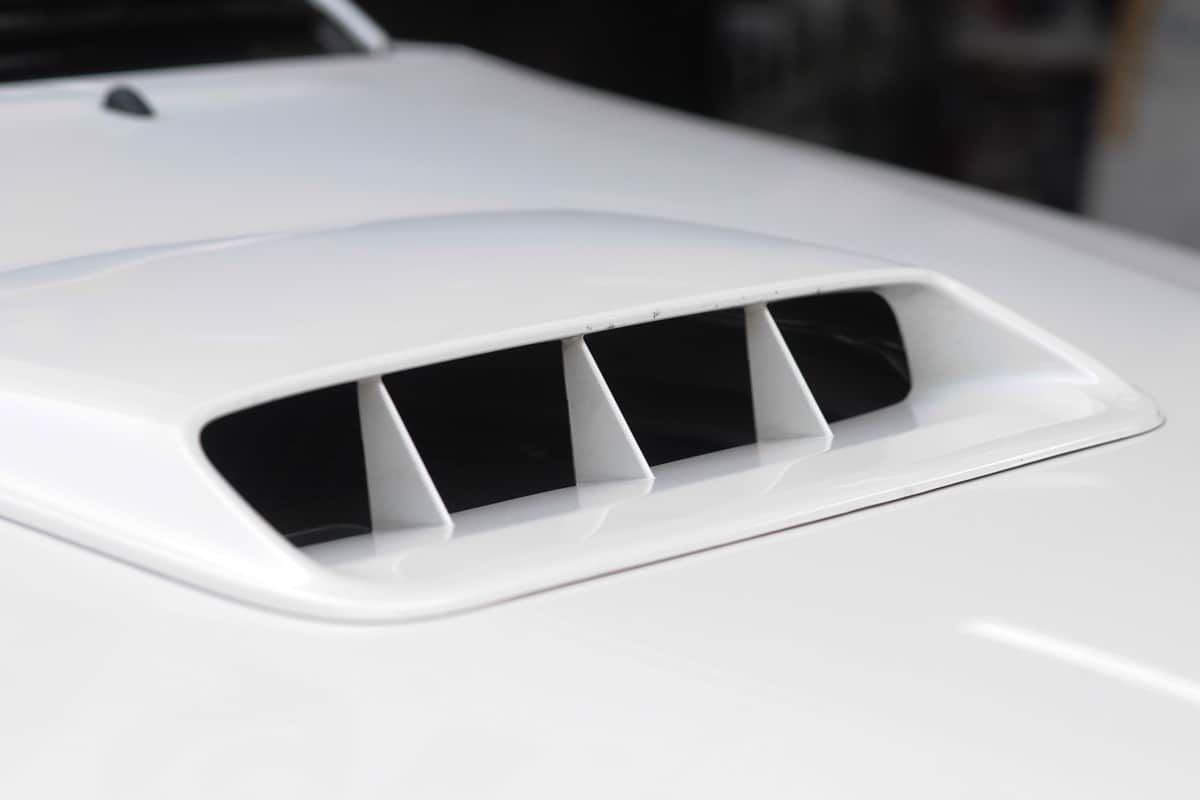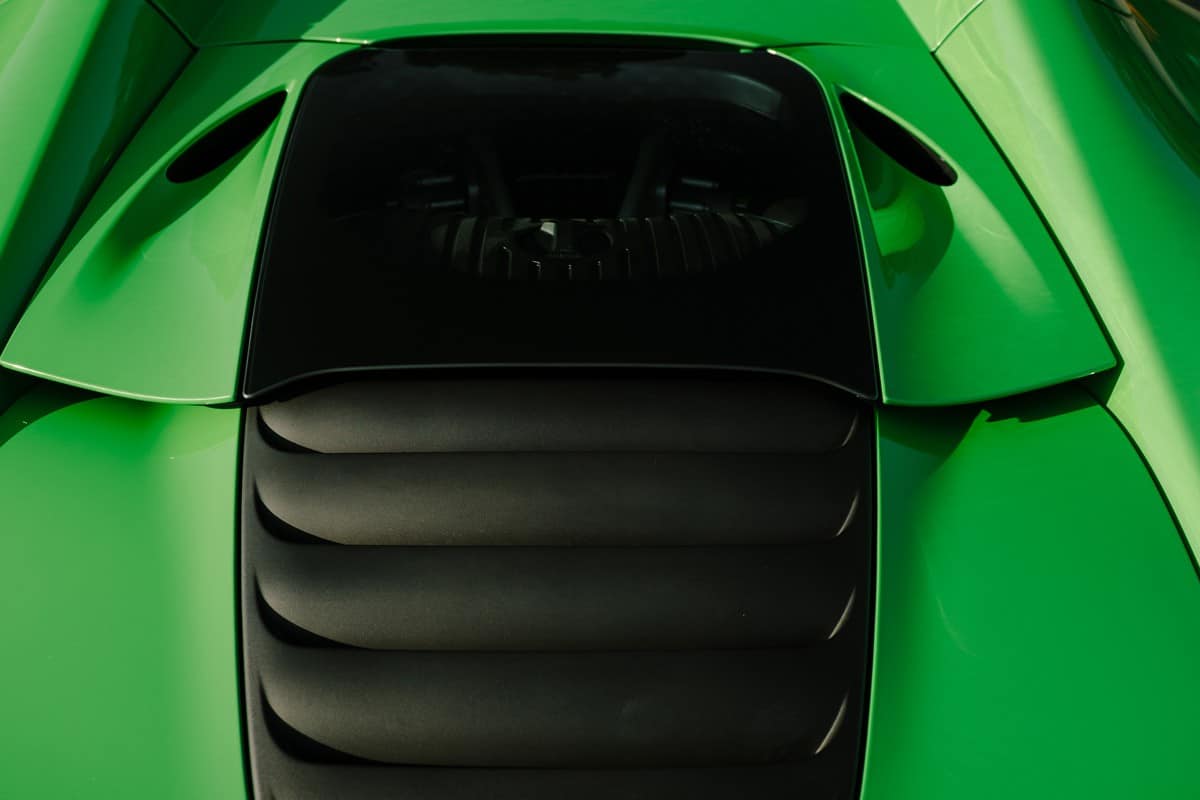Are you having cooling problems inside your engine bay, and you’ve decided to vent it to lower the temperature? Do you want to learn the different ways of venting the engine bay? You’ve come to the right place, for we have researched this question and found the answer for you.
There are a few ways to vent your engine bay. The steps below are the summary of the simplest way to vent.
- Open the hood.
- Remove the bolt that holds the hood. Do this one bolt at a time.
- Add a coupling on the bolt that holds the hood in place.
- Replace the bolt if it is not long enough for the coupling nut.
- Repeat the same process for the rest of the bolts that hold the hood.
Let’s talk about the different methods of venting the engine bay in the succeeding sections.
Read on!
What happens if you drive with overheating engine?
An internal combustion engine uses a mix of air and fuel to generate energy to move your car. The ECU (Engine Control Unit) determines the perfect timing to generate a spark inside the combustion chamber when the fuel and air are at the highest compression. The fuel and air burn and generates a tremendous amount of heat.
The process of combustion happens many times per minute, and the temperature inside the combustion chamber can get to 500 degrees in WOT conditions.
WOT or wide-open throttle is also known as a full throttle. This is the state of the engine where the flow of fuel into the combustion chamber is at its maximum. In most cases, this is when the engine achieves its maximum power output.
It is never a good idea to keep driving if your car overheats. If you keep driving an overheating car, then the temperatures will keep climbing.
At first, the gaskets will start to leak. Leaks will cause your car to lose coolant, which will lead to even higher temperatures. The coolant can mix with the oil, causing the oil to lose its lubrication, leak into the combustion chamber, or escape the engine entirely.
Coolant leaving the engine will give the engine bay a sweet smell that can get into the cabin.
The engine will also start to lose oil. The oil can leak into the combustion chamber and burn with the fuel and air—changing the color of the exhaust, it can combine with the coolant, or it can escape the engine.
What should be done when the engine overheats?
![The BMW 5 Series E39 M5 engine bay after cleaning and dressing. Illustration of M Power car engine details. Concept of car detailing and modification, How To Vent Your Engine Bay [Step By Step Guide]?](https://vehq.com/wp-content/uploads/2023/01/11.-HOW-TO-VENT-YOUR-ENGINE-BAy.jpg)
If you notice that the engine temperature gauge is starting to inch its way to the red area (area with an “H”), you can do to following until you can get to a safe place to stop the car and let it cool. It is important to pull over and stop the engine at the first sign that it is overheating.
Set The Heater To Maximum
The heater core that the climate control uses to heat the cabin gets that heat from the engine.
The coolant that comes from the engine passes through the heater core and transfers the heat to its fins. A blower will blow cabin air through the heater core to heat the air.
Once you set the heater to maximum, the blower will blow at full power through the heater core. This will help cool the coolant that passes through the heater core. The more powerful the blower, the more heat will dissipate from the coolant.
If you don’t need the extra heat from the heater, just open the windows so that the hot air inside the cabin can escape.
Open The Hood
After you pull over and stop the engine, the first thing you can do is wait for the engine to cool down a little, then open the hood.
Never open the hood with your bare hands when your car is overheating. Always use rags to lift the hood. It will be very hot because the heat of the engine will radiate directly to the hood.
However, once the hood is opened, the air will help in cooling down the engine.
Check Coolant Level
Do this only after your car has had time to cool down. Do not do this when the engine is still slightly warm to the touch.
When the engine is at a high temperature, the coolant becomes pressurized. The higher the temperature, the higher the pressure of the coolant.
When you open the radiator valve or the reservoir cover, you risk having the coolant spraying all over the engine bay. You also run the risk of burning yourself with hot coolant if it sprays all over you.
Venting The Engine Bay

When the engine overheats, you open the hood to let the heat from the engine radiate out of the engine bay. Thus, exposing the engine to the ambient air will help cool it.
Similarly, when you vent the engine bay, the movement of air through the engine bay will help lower the temperature of the engine. The air that rapidly passes through the front grills of the engine while you drive will absorb heat from the engine. This warm air will then escape through the vents of the engine bay.
In effect, the vents help promote better airflow and circulation inside the engine bay.
Clearance Limit
How much clearance should you give the hood?
The height of the hood should not be too much when adding a coupling nut to the hood, or it will block your vision while you’re driving.
The Hillman Group Coupling Nut is available on Amazon through this link.
How to install a hood scoop?

A hood scoop creates an additional opening on the top of the hood. The raised part will capture air that flows along the surface of the hood.
A hood scoop acts as a dam to gather air into it and direct it into the engine bay. It got its name because it scoops air as you drive and redirects that to the engine.
Here are the steps to install a hood scoop on your hood to vent the engine bay.
Preparing Your Car
- Park your car on level ground.
- Activate the parking brake.
- Set the gear shifter to Park(P) for automatic transmissions and the first gear for standard transmission.
- Get the correct sockets to loosen the bolts that hold the hood in place.
-
- This is normally a two-person job. You need someone to support the other side of the hood while you remove the bolts on your side.
- Once you're done, the other person will remove the bolts that hold the hood in place on their side.
- Place the hood on a level surface.
Amazon Basics Socket Set is available on Amazon through this link.
Cutting A Hole On The Hood
- Determine the best position for your hood scoop.
-
- In most cases, the area on your hood that has the most amount of airflow is near the windshield.
- Trace the bottom of the hood scoop on a piece of cardboard.
- Mark the top and bottom sides of the cardboard. The top side is the one that meets the bottom of the hood scoop.
- Cut the cardboard following the shape of the hood scoop.
- Trace the shape of the cardboard on the hood.
- Use a rotary saw with a blade for cutting through metal to cut the shape of the hood scoop on the hood.
-
- When cutting the shape of the hood scoop, consider the thickness of your cutting blade, which will take away from the size of the cut.
- If the hole ends up smaller than the hood scoop, you can grind the extra material off. On the other hand, if the hole is too big, you will not be able to adjust the hood anymore.
- Deburr the cut area.
- Apply anti-rust paint on the area.
AFA Tooling - Deburring Tool is available on Amazon through this link.
POR-15 Rust Preventive Coating is available on Amazon through this link.
Installing The Hood Scoop
- Mark the location of the holes of the hood scoop on the hood.
- Drill the holes.
- Apply steel epoxy on the hood scoop.
- Install the hood scoop.
- Apply rivets to fasten the hood scoop.
- Paint to finish.
J-B Weld Steel Epoxy is available on Amazon through this link.
How to install a hood vent?

You can install a hood vent in the same way as a hood scoop.
When air enters the engine bay from the radiator, the air absorbs the heat from the radiator and enters the engine bay. In most cases, this hot air can only escape from under the car. However, the flow of air under the car can slow down the release of hot air.
By installing hood vents, you provide an escape route for hot air that comes from the radiator.
Hood vents are like hood scoops. However, the opening faces the windshield instead of the front of your car.
To become even more effective, you can create a channel coming from the radiator fan that channels the hot air out of the hood vent—completely bypassing the engine bay. This prevents hot air from adding to the engine temperature. Additionally, this helps make the radiator more efficient.
Conclusion

Venting the engine bay improves the circulation of air. Additionally, a hood vent can redirect hot air from the radiator out of the engine bay.
If you found this article interesting, why not check the two articles below too:





